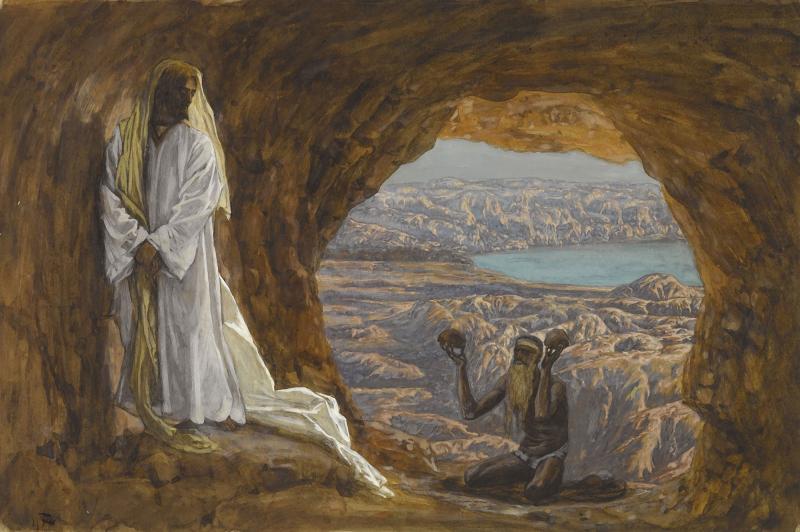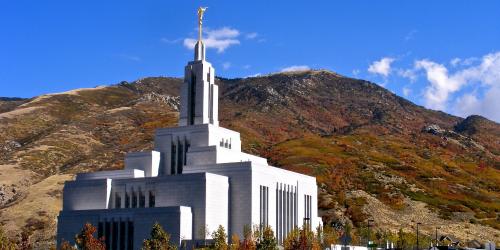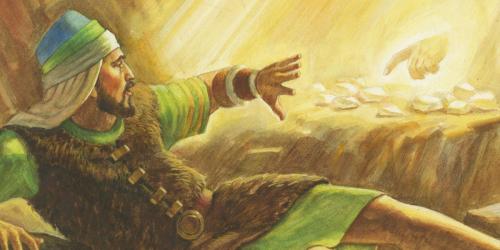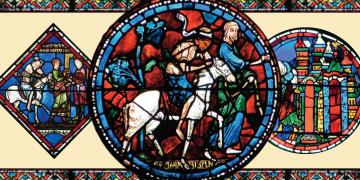You are here
Book of Mormon Central is in the process of migrating to our new Scripture Central website.
We ask for your patience during this transition. Over the coming weeks, all pages of bookofmormoncentral.org will be redirected to their corresponding page on scripturecentral.org, resulting in minimal disruption.
Many Christians are aware that Jesus was tempted by the devil when He was in the wilderness for 40 days. However, the Bible can only get us so far in understanding what was really going on while Jesus secluded Himself in the desert. Additional scriptures from the Restoration can go a long way in helping unveil some of the mysterious things in this story. The Book of Mormon, the Pearl of Great Price, and the Joseph Smith Translation all add to our understanding of Jesus’ temptations in the wilderness.
1. Joseph Smith Translation for Luke 4:5
Prophets go up into mountains to be endowed with knowledge and power from God
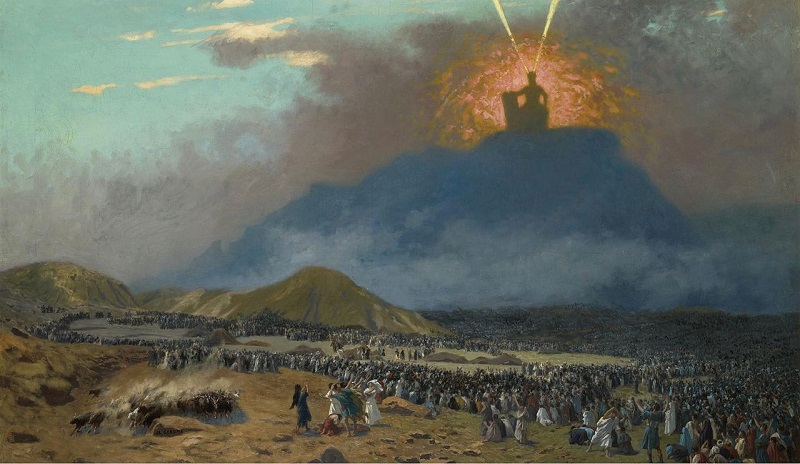
Moses on Mount Sinai by Jean-Léon Gérôme. Image via Wikimedia Commons.
During this episode, the devil took Jesus up into a mountain and tempted Him with all the kingdoms and worldly power humanity could offer if Jesus would worship Satan. Jesus wisely responded that people should only worship God. However, the Joseph Smith Translation helps us understand that it may not have been the devil that whisked Jesus up into a mountain, but rather the Spirit (Luke 4:5 JST, cf. Matthew 4:8 JST).
We learn from Nephi and Moses that the Lord sometimes brings His prophets up to mountains to give them special instruction and knowledge of God’s creations and plan for His children. Nephi recorded that he “was caught away in the Spirit of the Lord, yea, into an exceedingly high mountain” (1 Nephi 11:1). It was there upon a mountain that Nephi received a grand vision of God’s plan of salvation.
Moses likewise “was caught up into an exceedingly high mountain” to be endowed with knowledge and power from God (Moses 1:1). Like Jesus, Moses was tempted by the devil right as he was trying to commune with God.
The Brother of Jared went up into a mountain with 16 stones. He asked God to cause them to shine so that his people would have light in their barges when they crossed the ocean. The Brother of Jared carried the stones in his hand to the mountain, was instructed concerning God’s creations, and ultimately was allowed to enter into the full presence of Jesus Christ and behold His spiritual body. The account says that because of his faith, the Brother of Jared “could not be kept from beholding within the veil,” (Ether 3).
Nephi, the Brother of Jared, and Moses all had temple-like experiences on the top of mountains as they spoke with God. To learn more about the possible endowment experiences of Nephi and Moses, read this KnoWhy.
2. Alma 7:11–12
Alma correctly predicted what the Savior would suffer in the wilderness

Christ in the Wilderness by Ivan Kramskoi. Image via Wikimedia Commons.
Many years before the Savior was born, Alma the Younger preached to the people in Gideon about Jesus Christ. He prophesied that in addition to suffering temptations, Jesus Christ would suffer all kinds of things—like hunger, fatigue, loneliness, and helplessness—so that He could perfectly empathize with His people.
And he shall go forth, suffering pains and afflictions and temptations of every kind; and this that the word might be fulfilled which saith he will take upon him the pains and the sicknesses of his people. … and he will take upon him their infirmities, that his bowels may be filled with mercy, according to the flesh, that he may know according to the flesh how to succor his people according to their infirmities. (Alma 7:11–12)
While many of the things Alma and Isaiah predicted would come to pass in Gethsemane and on the cross, Jesus Christ also suffered temptations of hunger and fatigue during his 40 days in the wilderness so that He would know what it feels like to be a human subject to mortal weaknesses. Learn more about Alma’s teachings about Jesus Christ in this KnoWhy.
3. Mosiah 7:4–5
40 days in the wilderness is a significant period of time
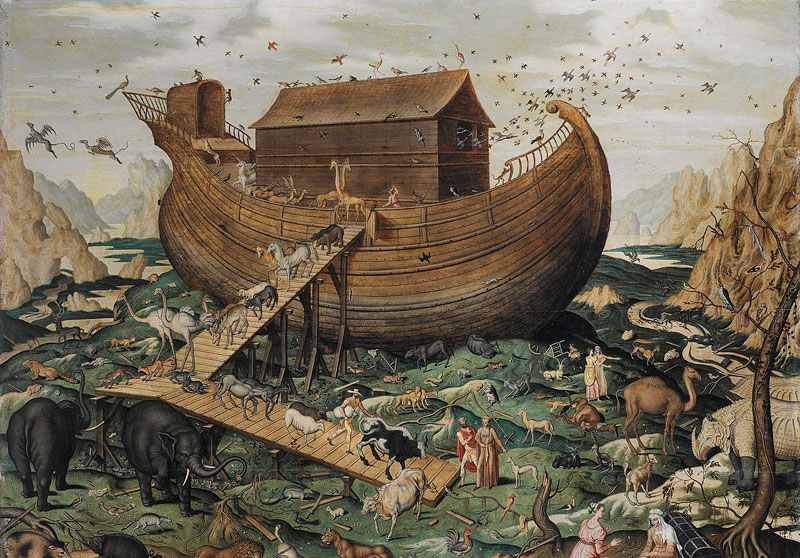
Noah's ark on the Mount Ararat by Simon de Myle. Image via Wikimedia Commons.
Jesus was in the wilderness fasting for 40 days before the devil came to tempt Him. The number 40 shows up many times in scripture. Some of the most famous examples include:
- Ammon wandered for 40 days in the wilderness before finding King Limhi and his people (Mosiah 7:4–5).
- Rain fell for 40 days and 40 nights during the flood (Genesis 7:4).
- Moses spoke with God for 40 days upon Mount Sinai (Deuteronomy 9:11).
- The children of Israel wandered for 40 years in the wilderness (Numbers 32:13).
- Important kings like David and Solomon were said to have ruled for 40 years (2 Samuel 5:4; 1 Kings 11:42).
- Elijah spent 40 days in the wilderness of Horeb (1 Kings 19:8).
The number 40 can symbolize a period of testing, trial, or probation. After Ammon and his brethren wandered in the wilderness for 40 days, they were blessed by finally entering the land of Nephi and being able to deliver the people of Limhi out of bondage.
While the children of Israel often complained to the Lord during their 40 years of probation in the wilderness, Jesus Christ symbolically reversed all these acts of faithlessness by His own acts of faithfulness during His own 40 days in the wilderness.
Related Come Follow Me Resources
Subscribe
Get the latest updates on Book of Mormon topics and research for free


